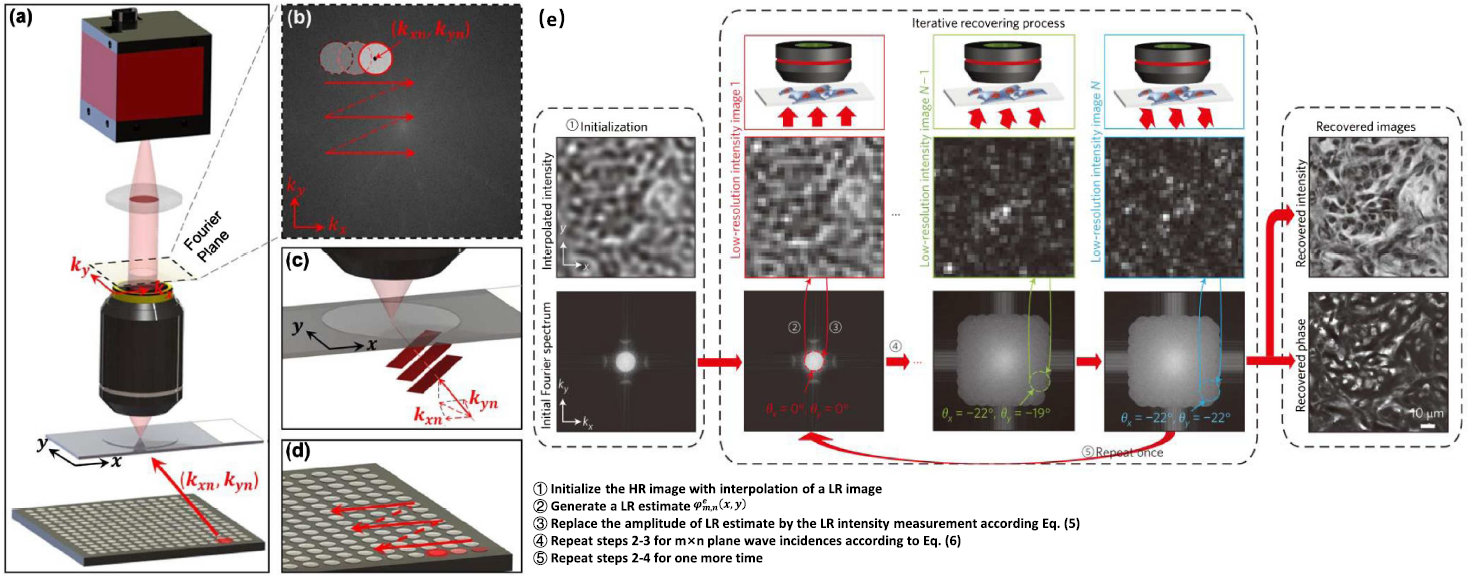Fourier ptychographic microscopy (FPM) is a computational imaging and quantitative phase imaging (QPI) technique. It effectively tackles the trade-off between resolution and field-of-view (FOV) in conventional microscopy. It can obtain a gigapixel image without mechanical scanning and has been applied in digital pathology in recent years.
A research team led by Prof. YAO Baoli from Xi'an Institute of Optics and Precision Mechanics (XIOPM) of the Chinese Academy of Sciences (CAS) reviewed recent advances in FPM, including the implementation of high-precision quantitative phase imaging, high-throughput imaging, high-speed imaging, three-dimensional imaging, mixed-state decoupling, and introduced the prosperous biomedical applications.
The study was published in Reports on Progress in Physics on August 18.
Prof. YAO and his collaborators have developed a series of methods to implement high-precision FPM stably and efficiently since 2014, involving the solution to uneven LED illumination intensity, data preprocessing methods to suppress noise, system calibration algorithm (SC-FPM) and the solution to vignetting effect.
 Schematic of FPM and recovery procedures.CC BY 3.0.
Schematic of FPM and recovery procedures.CC BY 3.0.
In this study, the researchers provided a comprehensive roadmap of microscopy, the fundamental principles, advantages, and drawbacks of existing imaging techniques, and the significant roles that FPM plays in the development of science. They also revealed the internal connection between FPM and structured illumination microscopy (SIM).
In terms of high-resolution FPM, they put forward subwavelength resolution FPM (SRFPM) with hemispherical digital condensers, attaining a 4×/0.1NA objective with the final effective imaging performance of 1.05 NA at a resolution of 244 nm with the incident wavelength of 465 nm across a wide FOV of 14.60 mm2 and a depth-of-field (DOF) of 300 μm.
The researchers also discussed the challenging problems and future applications of FPM. FPM can be extended to a kind of framework to tackle the phase loss and system limits in the imaging system. This insight can be used easily in speckle imaging, incoherent imaging for retina imaging, large-FOV fluorescence imaging, etc.
"We believe that this review could provide critical insights for future advancements in the study and applications of FPM," said Dr. PAN An, the first author of the study.
Download: